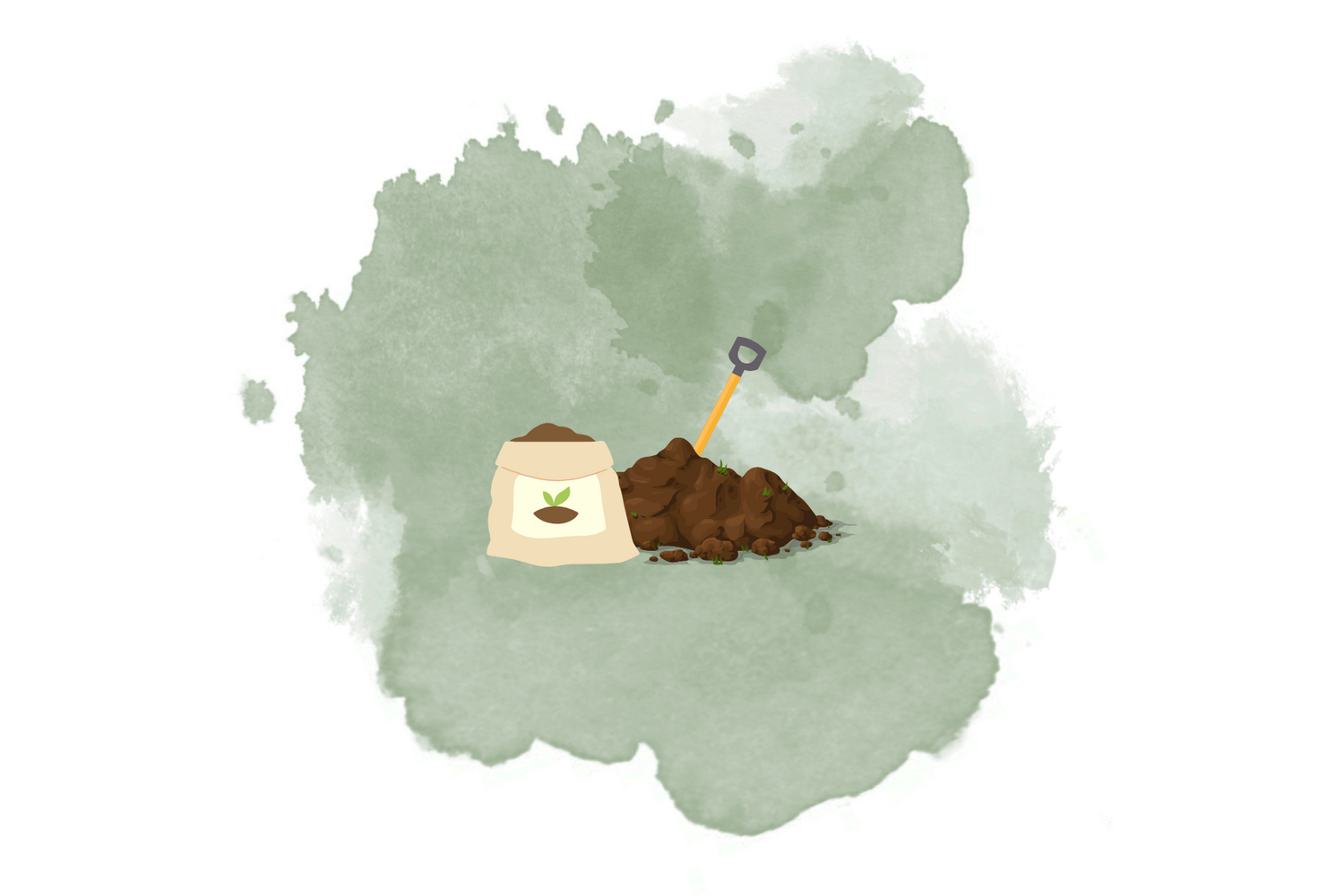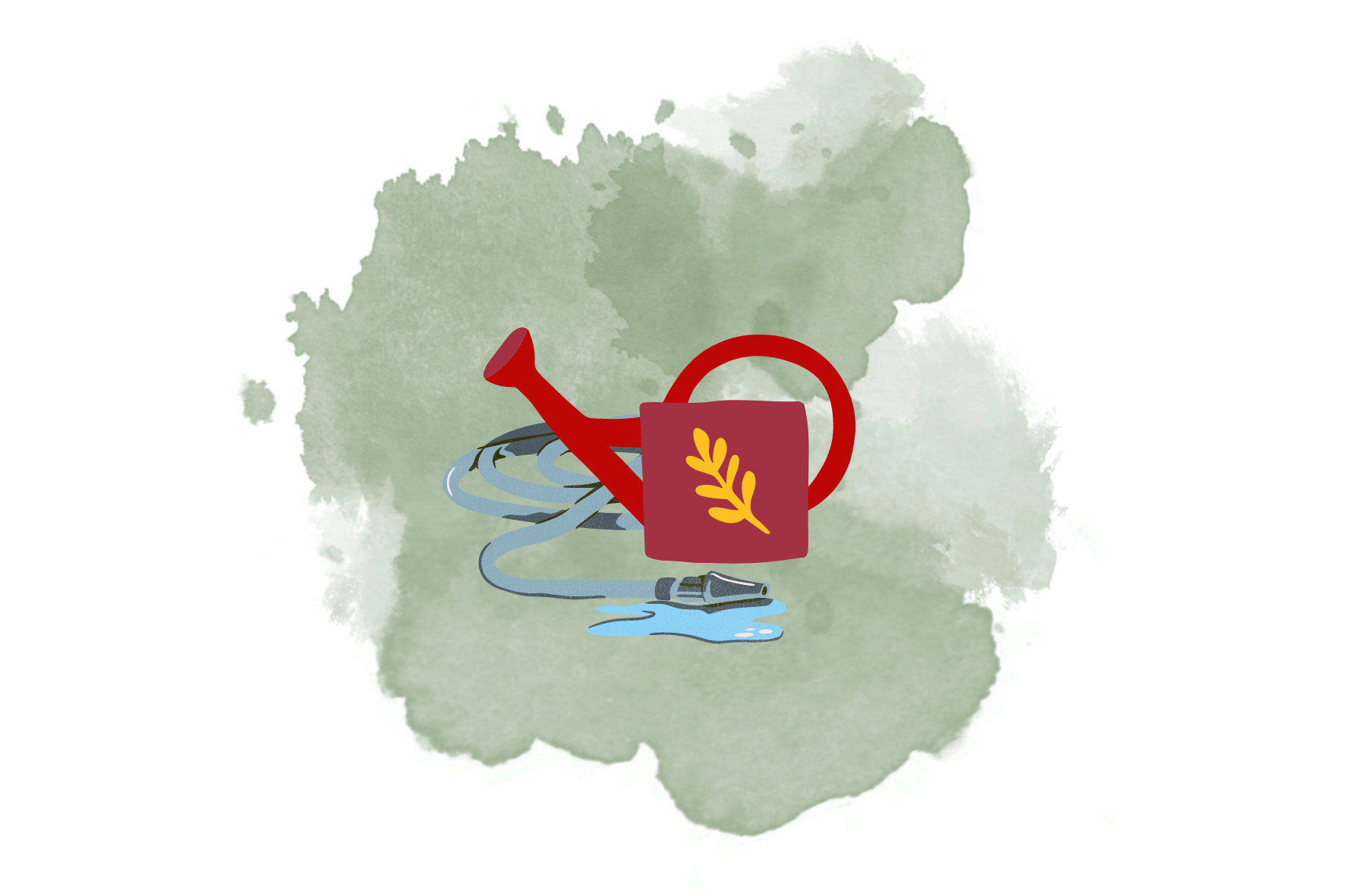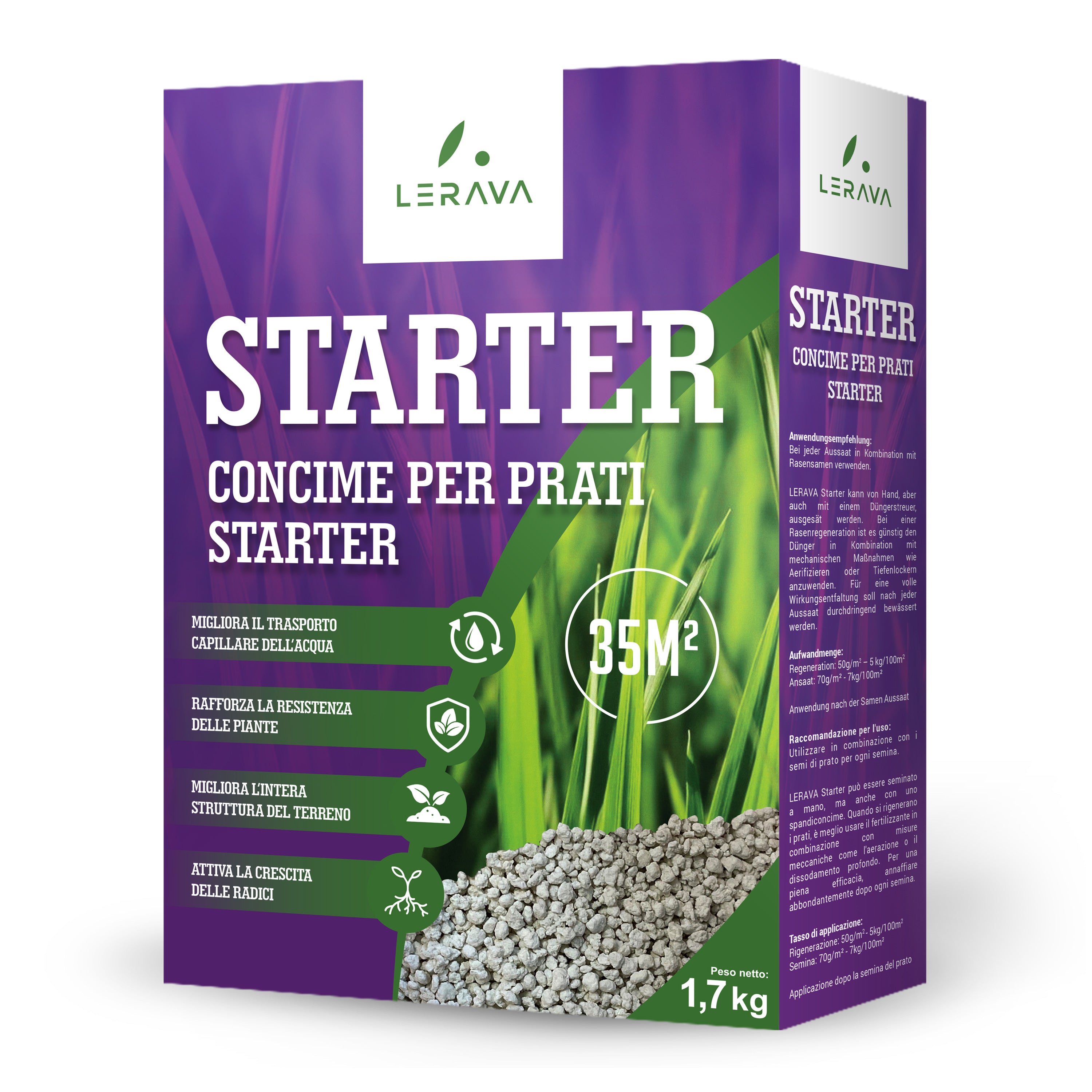From spring to autumn, you can create a new lawn. However, the intensity of care varies greatly depending on the temperature and weather.
In summer when temperatures are high, attention and water are important for healthy growth. Seeding too early risks the soil temperature dropping below 10 degrees and the seed failing to germinate. The best time to sow is between mid-April and the end of May or in September, when the soil temperature is stable and the risk of soil frost is low.
When choosing the best seeding mix for your lawn, there are many factors to consider. The soil, the time available for maintenance and the stress on the lawn are just a few. Outside circumstances, such as the amount of shaded areas, can also play a role. For example, if you receive little sun due to trees or adjacent buildings, there are special seed mixes for shade turf. Heavily trafficked areas require robust turf varieties to stay lush and green over the long term. We offer a wide selection of seed mixes specifically designed to meet your needs.
Time to get to work!
Step 1: Remove the weeds!
Before you plant your new lawn, you need to have a clean surface. You need to remove the weeds and make sure that their roots do not survive. Remove the weeds by hand (perhaps with a special weed remover) or with an approved herbicide. If you use a chemical herbicide, make sure it doesn't attack the new seeds, or they won't germinate.
Step 2: Remove the old turf
Remove the old turf. This work is tiring, but it's worth it. If you want to plant a new lawn on top of an old lawn that is infested with weeds, it is best to remove it with a lawn aerator.
Step 3: Plow and level the soil
After removing the old lawn, it's time to plow and level the soil. For plowing, a depth of 20 to 25 cm is recommended. It is better to use a scarifier. Doing everything by hand can be a difficult task. After plowing, let the soil rest for one to two weeks. This two-week period is essential for best results, as it gives the weeds remaining in the soil time to grow again. Remove it by hand and level the surface with a rake. This is also the time to consider the soil type. Adding soil amendments such as well-rotted (weed-free) compost. It improves drainage of clay soils and moisture retention of sandy soils. Then use a roller to get a level and even soil surface.
Step 4: Fertilize the soil
Encourage germination and rooting of your new seeds by fertilizing the soil before sowing. Use Lerava's Starter lawn fertilizer, which strengthens plant roots and improves growth when you seed your lawn. We recommend using the fertilizer Lerava Starter in combination with lawn seed, twice a year at a dose of 50 g/m² for regeneration and 70 g/m² for sowing.
Step 5: Sow your new lawn
Sow your new lawn seed. If you have a small lawn area, you can sow the seed by hand. For larger areas, you should use a spreader.
Step 6: Compact the lawn seed
To ensure optimal germination, it is important to compact the lawn seed firmly on the soil surface. To do this, you can use a lawn roller or press the seeds down with your feet, especially if you have a small lawn. Direct contact between the seeds and the soil surface is important to prevent the seeds from being washed away by rain or irrigation.
Step 7: Watering!
To ensure even watering and germination of seeds, it is advisable to water lightly four times a day rather than watering generously once a day. This will prevent the seeds from being stirred up and unevenly distributed. It is recommended to water daily until the seeds have germinated, which usually takes about two weeks.
Step 8: Mend bare spots
Despite your best efforts, it is possible that some seeds may have shifted during the seeding process and you may discover some bare spots on your new lawn. It is advisable to wait two weeks after germination to check if there are indeed any bare spots. If there are, you can fix these spots by reseeding with new seed. TIP: When buying lawn seed, it is advisable to buy 10% more than you actually need. This will give you the opportunity to reseed as needed.
Step 9: Cutting the lawn
It is advisable to wait 21 days after the grass germinates before you start mowing the lawn. Avoid walking on the new grass plants during this time. When cutting, it is important not to cut off more than one-third of the length of the grass blade, as this could weaken the plant. If you want a shorter lawn, wait a few days and cut another third of the length. Cutting every 3-5 days will promote faster growth of the lawn.
Step 10: Protect the lawn
It is advisable not to walk on the lawn throughout the first season to avoid damage to the delicate young plants. Give the lawn a few months before you use it, and it will reward you with many years of beautiful green appearance.

![#Taglia_1.7kg [sku-A0291] [lang-IT] [lang-EN]](http://lerava.com/cdn/shop/files/Cessione_IT.png?v=1749635507&width=2000)
![#Taglia_1.7kg [sku-A0291] [lang-IT] [lang-EN]](http://lerava.com/cdn/shop/files/Cessione_IT.png?v=1749635507&width=104)
![[lang-IT] [lang-EN]](http://lerava.com/cdn/shop/products/B09SLG7DHN.MAIN.jpg?v=1674813929&width=104)
![#Taglia_70m² [sku-VV-KMTV-QLBE] [lang-it] [lang-en]](http://lerava.com/cdn/shop/files/Primavera_IT_1.png?v=1749609539&width=104)
![#Taglia_100m² [sku-A0360] [lang-IT] [lang-EN]](http://lerava.com/cdn/shop/files/ESTATE_IT_100m.jpg?v=1751879953&width=104)
![#Taglia_70 m² [sku-A0016] [lang-it] [lang-en]](http://lerava.com/cdn/shop/files/Add_a_heading.png?v=1758461245&width=104)
![[lang-IT] [lang-EN]](http://lerava.com/cdn/shop/files/Solfato_Di_Ferro_IT_1.png?v=1749608449&width=104)
![#Taglia_30m² [sku-AVARACH] [lang-IT] [lang-EN]](http://lerava.com/cdn/shop/files/Champion_IT.png?v=1749608049&width=104)
![#Taglia_30m² [sku-A0265] [lang-IT] [lang-EN]](http://lerava.com/cdn/shop/files/Express_IT_1.png?v=1749619514&width=104)
![#Taglia_10m² [sku-A0148] [lang-IT] [lang-EN]](http://lerava.com/cdn/shop/files/1_10_IT.jpg?v=1727419569&width=104)
![#Taglia_20m² | 200g [sku-A0192] [lang-IT] [lang-En]](http://lerava.com/cdn/shop/files/1_1_193571c2-dc92-488a-b9ac-170592f0b658.jpg?v=1744210602&width=104)
![#Taglia_200g [sku-A0220] [lang-IT] [lang-EN]](http://lerava.com/cdn/shop/files/IT_Semi-Trifoglio200g.jpg?v=1756610388&width=104)






